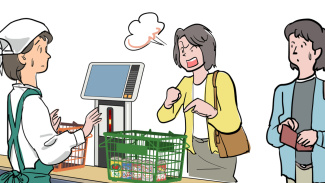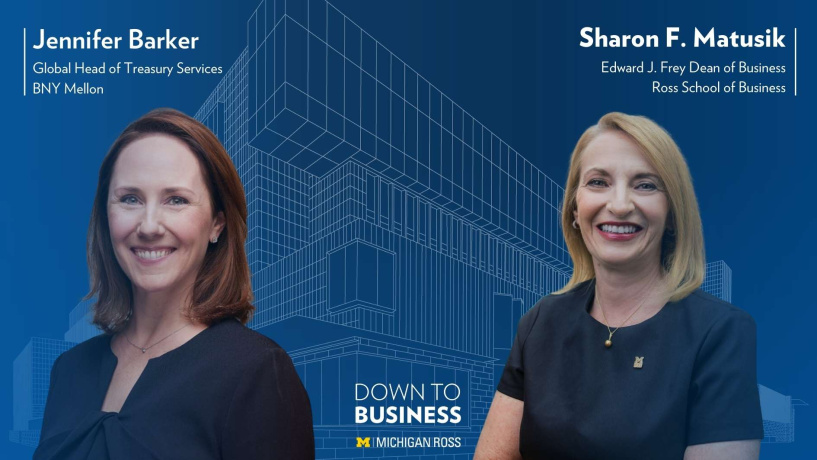New Research Suggests Very Angry Customers Sometimes Get More Money From Customer Service Representatives

A familiar saying, “the squeaky wheel gets the grease,” implies the most noticeable problem will get the attention needed to resolve it. But how true is this in customer-service settings? Do the angriest complaints receive the best service?
Research by Michigan Ross Professor Shirli Kopelman and colleagues shows that, in some instances, yes — a higher level of anger from a customer can positively impact the resolution of their complaint. In other cases, the reverse is true.
In an article recently published in the Journal for Service Research, Kopelman, along with co-authors Ella Glikson, Laura Rees, Jochen Wirtz, and Anat Rafaeli, show there are complex social dynamics at play in customer service relationships that are significantly impacted by emotions and cultural values..
Anger in particular is an important concern in customer service, as a healthy business wants to keep both its customers and its employees reasonably happy. Understanding how employees react to customer anger can therefore help companies improve.
The authors conducted four studies that, taken together, show how the intensity of the anger expressed by customers, combined with the social position of service employees, influence customer-service outcomes.
The concept of power distance (PD)—the degree to which societies or individuals accept inequalities between people as unavoidable, legitimate, or functional—is key to this research. High-PD cultures or individuals perceive power inequalities as acceptable and stable; low-PD cultures or individuals perceive power inequalities as dynamic and avoidable.
Among the researchers’ findings:
-
Customer-service workers experience a wide range of anger intensity from customers seeking compensation for complaints.
-
Compensation decisions vary depending on how the employee perceives the intensity of the customer’s anger.
-
In a high-PD culture (for example, Singapore), lower-intensity anger received more compensation for complaints than high-intensity anger.
-
In a low-PD culture (for example, Israel), higher-intensity anger received more compensation.
-
These findings hold true for individual differences, as well as differences across societies. Within the U.S., low-PD individuals offered more compensation to angrier customers; high-PD individuals offered more compensation to less angry customers.
-
These differences can be explained by employees’ perceptions: High-PD employees perceive higher-intensity anger as being inappropriate, and therefore compensate it less; low-PD employees perceive higher-intensity anger as threatening, and therefore compensate it more.
-
When perceived threat is mitigated, low-PD employees respond similarly to high-PD employees, offering more compensation for lower-intensity anger.
This research highlights that as a customer, when you experience bad service, you have a choice on how to address the service employee.
The findings show that high-PD employees might overlook or undercompensate customers who express higher-intensity anger. In contrast, low-PD employees might overcompensate highly angry customers, yet potentially overlook the needs of customers who express relatively lower levels of anger.
This research yields important practical insights for both employers and customers: Absent the threat of higher-intensity anger expressions, lower-intensity anger might be perceived as a more legitimate indicator of damage that deserves compensation.
The authors suggest ways that companies can use the findings to improve:
-
Emotion management training can foster a climate of support and reduce perception of threats among employees.
-
Training should address perceptions of anger; in high-PD cultures, it could focus on the importance of customers and understanding why they would behave in ways employees might see as inappropriate.
-
Communicating to customers about the negative impact of inappropriate behavior, and having clear service recovery policies, can help employees manage customer anger.
Given the cultural diversity of employees in service-providing organizations and the ever-increasing globalization of work environments, there is a growing need to understand how the culturally-informed tendencies of service employees influence customer service in general, and responses to service failures in particular.
Kopelman emphasizes, “Our research findings highlight how mindfully leading with emotions — for example, when professional expectations are not met, expressing lower- instead of higher-intensity anger in social environments where people do not feel threatened by emotions — can yield financial results and foster well-being.”
Shirli Kopelman is a clinical professor of management and organizations at the University of Michigan Ross School of Business.
Media contact: MichiganRossPR@umich.edu







